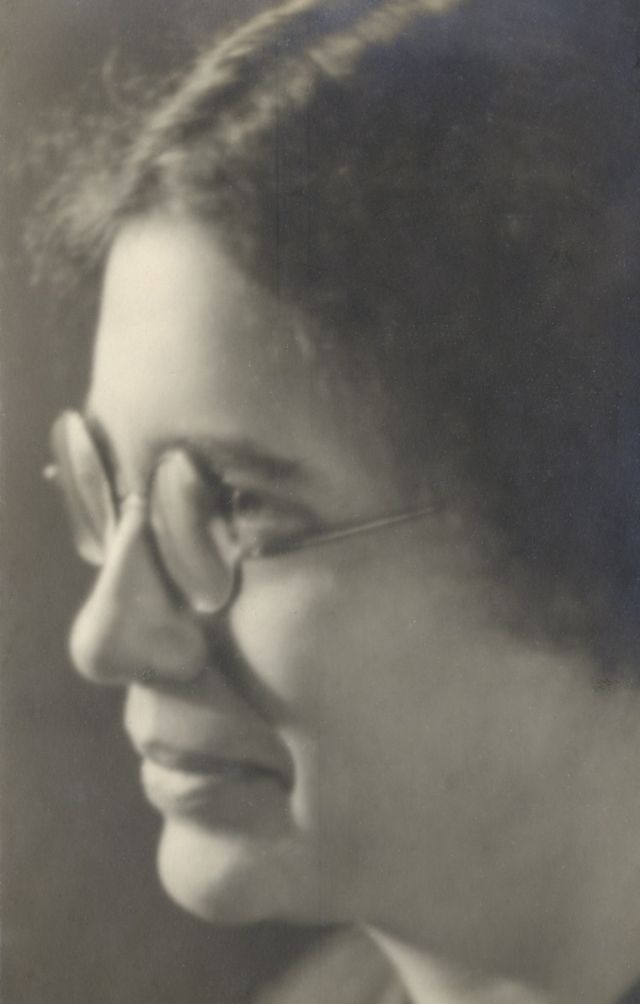Today the name of Ina Lohr (1903-1983) is probably only known to a select few in both Basel and the Netherlands. In 1930, shortly after her arrival in Basel, she became Paul Sacher’s assistant in his work with the Basel Chamber Orchestra, a position that she retained for more than 50 years. Stemming from this cooperation, she was also involved in the founding – together with Paul Sacher, Arnold Geering and Walter Nef – of the now internationally known school for Early Music, the Schola Cantorum Basiliensis. With the support of the Swiss National Science Foundation a research team (Jeremy Llewellyn, Anne Smith, Kelly Landerkin and Jed Wentz) began in 2014 to study her life and work within the project “Ina Lohr (1903-1983), an Early Music Zealot: Her Influence in Switzerland and the Netherlands” at the Schola Cantorum Basiliensis/University of Applied Sciences and Arts FHNW. The goal of the project was to investigate her role in the founding and success of these institutions and to evaluate this information in relation to the various 20th-century musical reform movements and specifically to the Swiss and Dutch schools of performance practice of Early Music.
Introduction to the Project “Ina Lohr”
Published: 05.09.2016 Author: Anne Smith
Research project
How to cite
Anne Smith, "Introduction to the Project “Ina Lohr”".
Forschungsportal Schola Cantorum Basiliensis, 2016.
https://forschung.schola-cantorum-basiliensis.ch/en/forschung/ina-lohr-project/introduction.html
(Abgerufen am TT MM JJJJ)
Licence
The text of this article is provided under the terms of the Creative Commons License CC-BY-NC-ND 4.0

Born in Amsterdam in 1903, Ina Lohr studied violin at the Muziek-Lyceum Amsterdam and completed her studies there in 1929 with a degree in violin pedagogy. In order to recuperate from the demands of her studies she set off for a vacation in Davos, Switzerland. In the train, however, she suffered an attack of weakness and stopped – almost purely by chance – in Basel, remaining there for the rest of her life, even becoming a citizen of the city in 1942. Very early on she met Paul Sacher – an encounter which was to have great impact on her musical career – becoming his assistant in 1930. It is only with this study that the true extent of her participation in the preparations of the Basel Chamber Orchestra of both early and contemporary music has become evident. At the same time she was responsible for the content and instruction of all of the theory courses during the first thirty years of the Schola Cantorum Basiliensis, as well as for classes in “Hausmusik.”
The source for all of her work was her profound sense of religiosity. She was active in the Swiss “Singbewegung” as well as the introduction of the trial volume of the new hymnal for the German-speaking Protestant church in Switzerland. She taught Protestant church music and liturgy to theology students at the Schola and in 1958 even received an honorary doctorate in theology from the University of Basel. Because of these activities she was invited after World War II to give various workshops aimed at the reform of Protestant church music in the Netherlands. She was so successful there that numerous musicians, such as Gustav Leonhardt, Jan Boeke and Kees Vellekoop came to Basel to study with her. They were followed a few years later by Eric Ericson and Sven-Erik Bäck who were searching for a similar musical renewal in Sweden. At the same time the Early Music movement was itself beginning to strive after a higher level of professionalism, was seeking to free itself from the ideology of dilettantism fundamental to “Hausmusik.” This, among other reasons, is why Ina Lohr’s name is no longer known.
Research on this project has shown how some of the specifically Dutch aspects of her musical training – particularly in regard to the reform of sacred music, both Catholic and Protestant – were taken to Switzerland, transformed and then brought back to the Netherlands. In the course of this process, many national, religious, stylistic, and chronological boundaries were transcended, or perhaps just ignored, blurred or violated. Awareness of these various influences on the development of the Early Music movement in the 20th century brings a new understanding of our practice today, its sources and its limitations.
